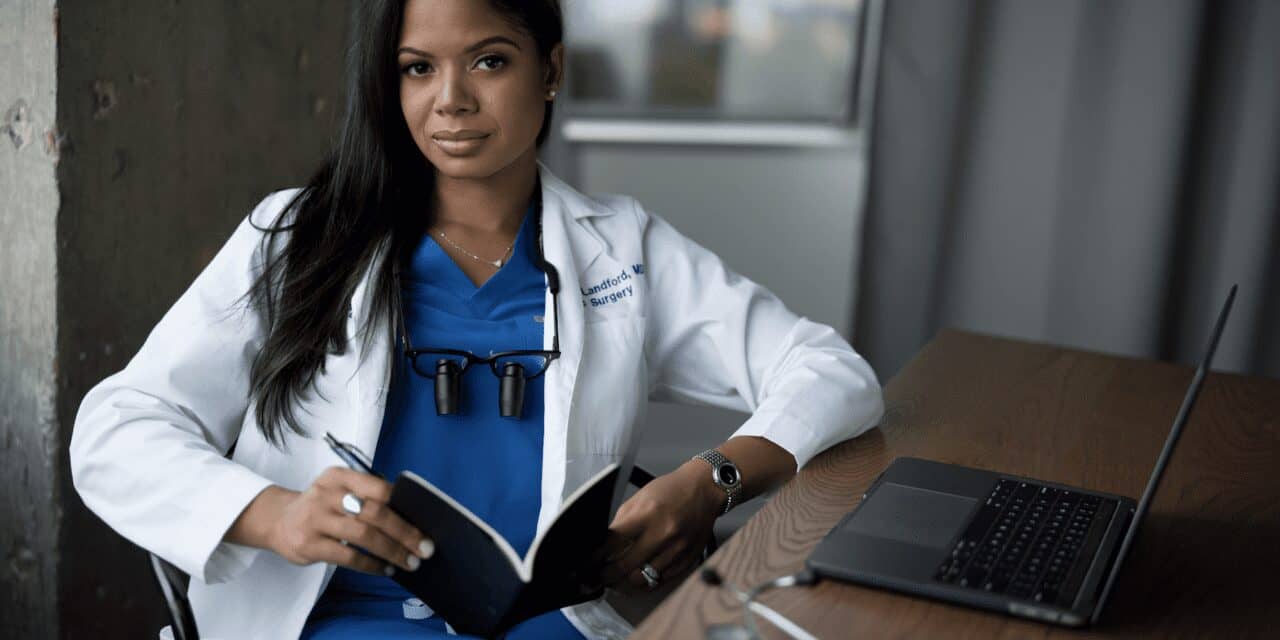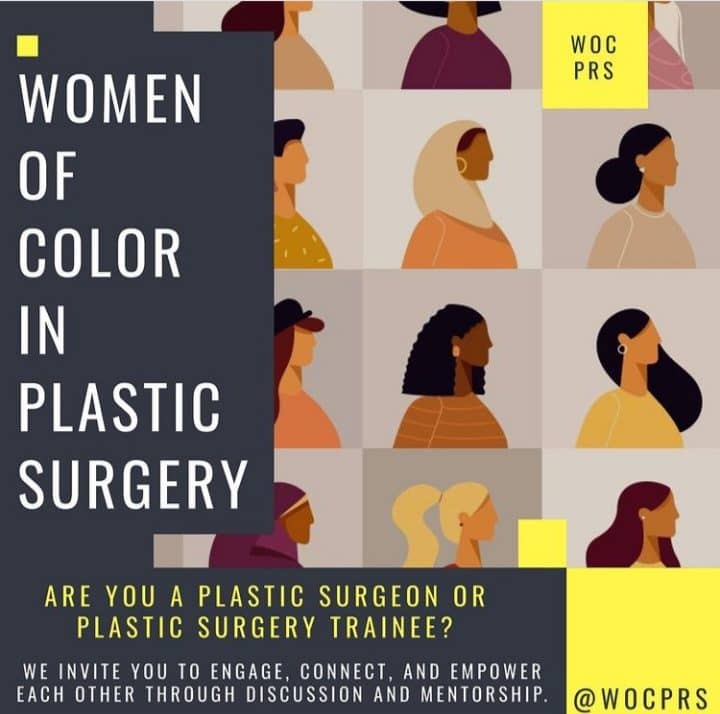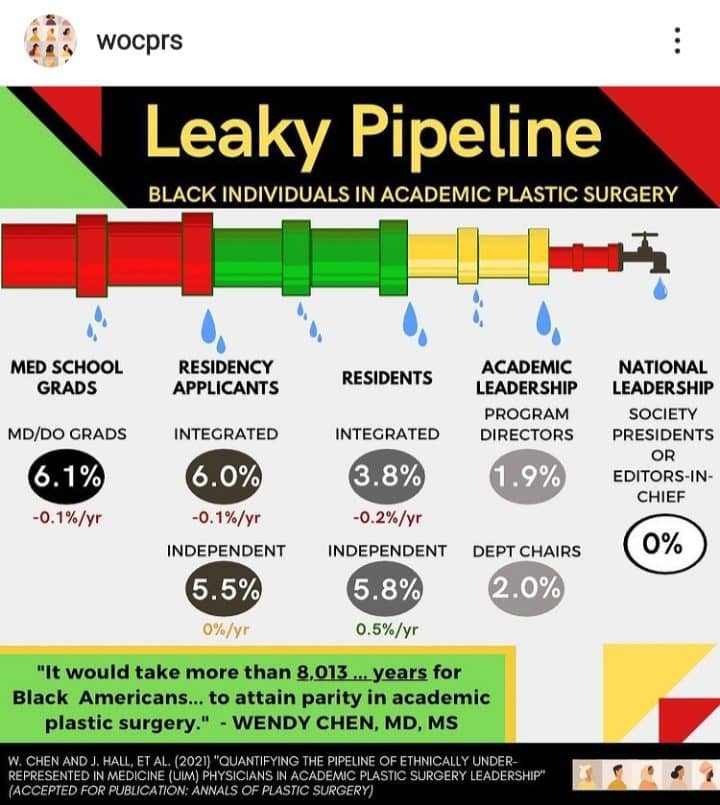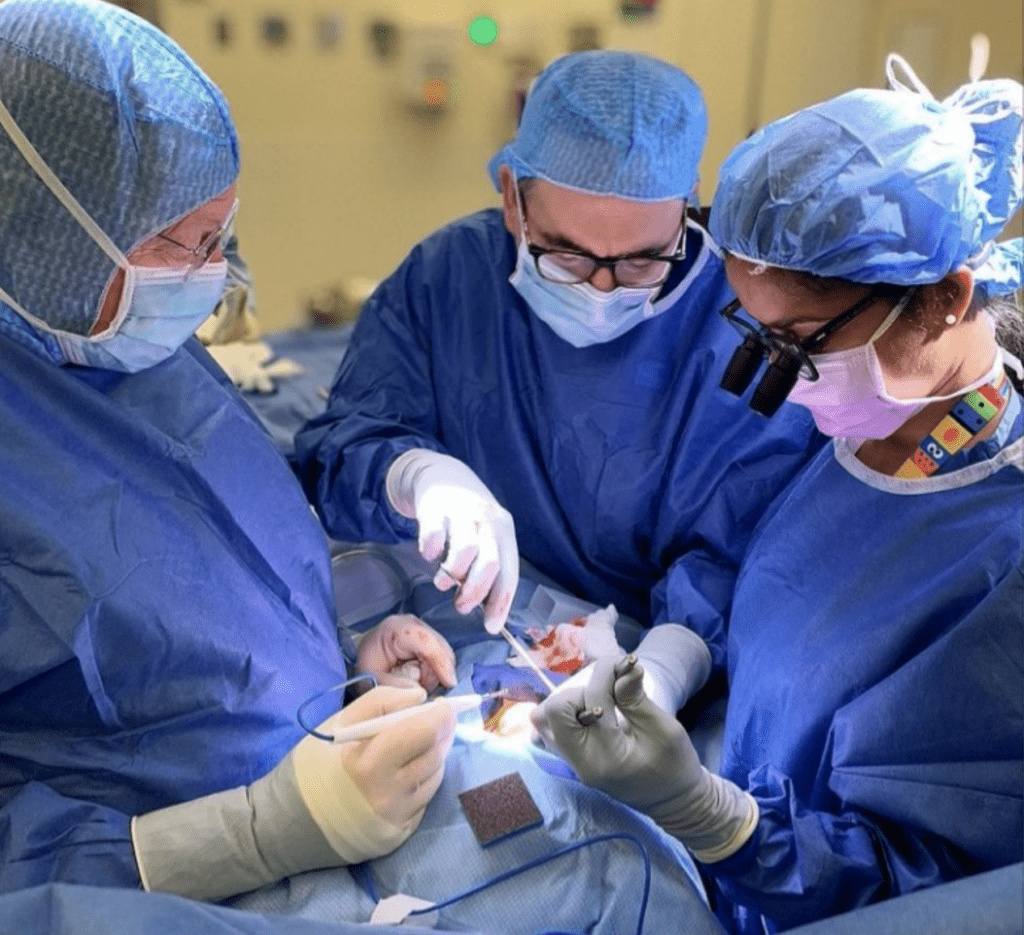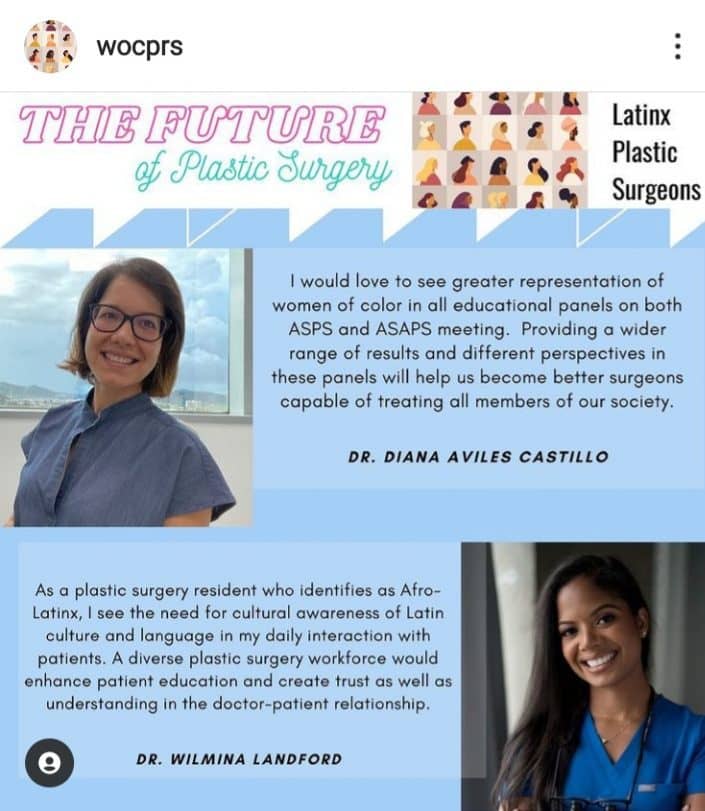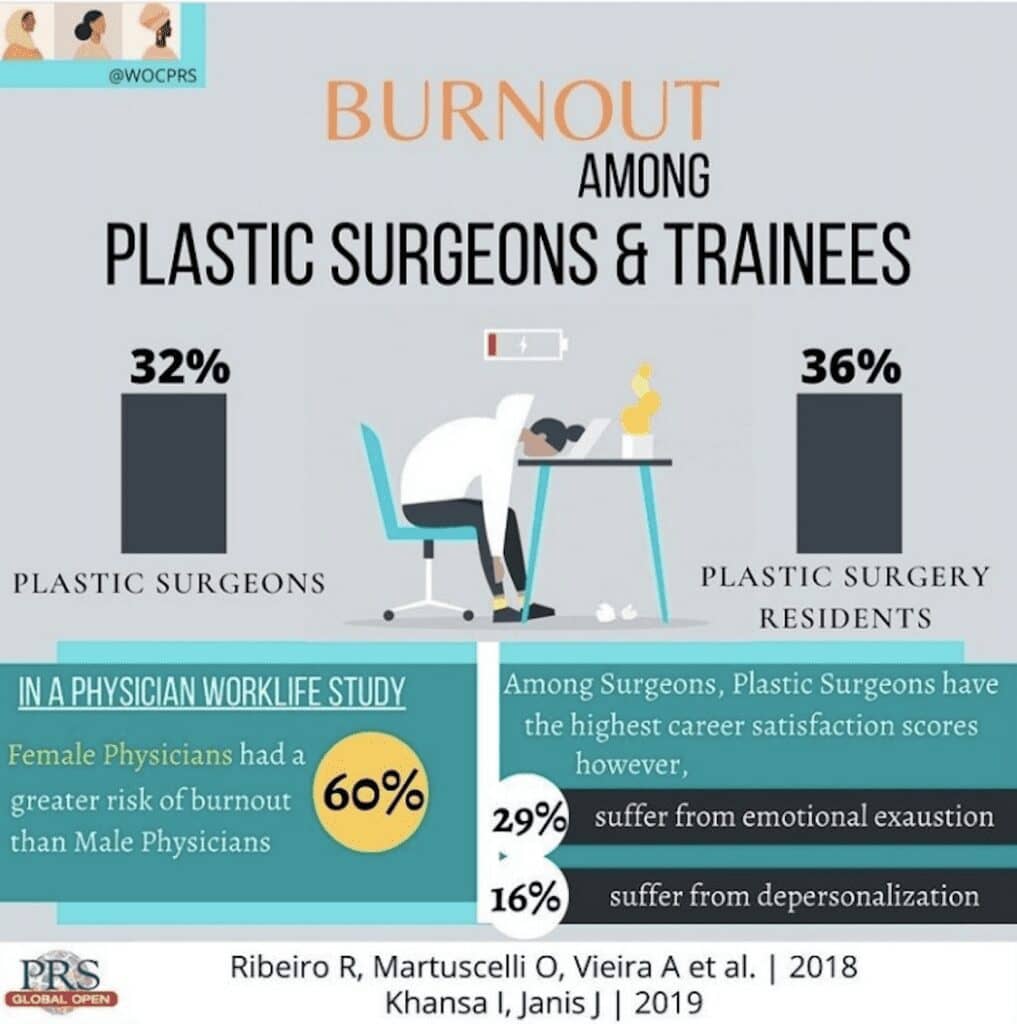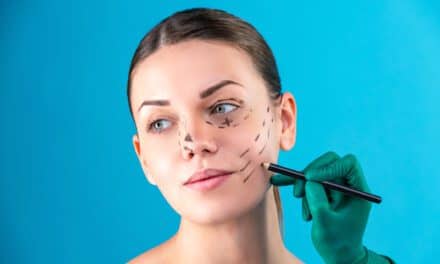Dr Wilmina N. Landford launched WOCPRS in 2020, to engage, connect, and empower plastic surgeons and plastic surgery trainees who identify as women of color, through discussion and mentorship/sponsorship.
By Tonya Johnson
Last summer, at the height of the global coronavirus pandemic, and as the Black Lives Matter Movement to end racial and social inequalities globally continued to develop — in the wake of countless deaths including Breonna Taylor and George Floyd, Wilmina N. Landford, MD, a plastic surgery resident physician at Johns Hopkins Hospital and the University of Maryland Medical Center, was laser focused on advocating for her Black and Brown female colleagues in the medical community. She found that, according to the Association of American Medical Colleges (AAMC) statistics, women of color in plastic surgery only consist of 5% of active academic plastic surgeons. So, in July 2020, she launched Women of Color in Plastic Surgery (WOCPRS) to engage, connect, and empower plastic surgeons and plastic surgery trainees — who identify as women of color — through discussion and mentorship/sponsorship.
Plastic Surgery Practice caught up with the clinical research award winner to learn more about her expectations for WOCPRS moving forward, and her life as a plastic and reconstructive surgeon. Additional accolades include: resident liaison at Johns Hopkins Dept. of Diversity and Inclusion, founder of Johns Hopkins Aesthetica, director of aesthetic curriculum for Johns Hopkins PRS Residency, founder of Birthright Liberia, a mentor for Life by Tosin Women of Color Mentorship Program, and a physician leader for UMB CURE Scholars Program. As an instructor and published physician, Landford has appeared on numerous panel discussions.
Plastic Surgery Practice: Why did you launch WOCPRS?
Landford: As a plastic surgery resident who is a woman of color (WOC), I was curious to know where women who share a similar ethnic background were ending up. Whether it was private practice or academia. I wanted to know why. I wanted to learn about their journey, and I wanted to create a medium for us to connect and empower each other. I discussed my interest to Wendy Chen, MD, MS who is the founder of TIMESUPPRS and a current hand and microsurgery fellow at the University of California, Los Angeles (UCLA) and she thought WOCPRS was an excellent idea!
She was fully supportive and has been with me through this endeavor. Ultimately, I hope that this organization of women will serve as a pipeline for surgeons and trainees who are navigating their careers and the academic leadership structure.
PSP: How has the association evolved since its 2020 inception?
Landford: WOCPRS expanded immediately. Since the organization was started during the COVID-19 pandemic, our platform has mainly been on Zoom or Instagram (@wocprs). We highlight WOC surgeons, post about career tips and tricks, and we encourage those who follow us to engage in discussion about topics we post. We currently have 180 WOCPRS members who all identify as WOC and we continue to grow. We have surgeons in private and academic practice, residents and fellows, as well as medical students and research fellows. I can still remember our first Zoom meeting. We had about 60 women who joined the conversation. It was a meeting to just introduce ourselves. I thought we were going to end the conversation early after introductions but as soon as the last person shared their name and background, the conversation led us to a 4 hour discussion on topics that brought us laughter, made us reflect, and which brought us hope.
PSP: What type of feedback have you received? How have members and colleagues engaged with one another?
Landford: Soon after our first meeting, several women approached me about helping me with this vision. So I have an amazing group of medical students who are content creators for our social media page. They include Joowon Choi, Thais Calderon, Lauren Catterall, Ayana Cole-Price, Abra Shen, and Simran Singh. They have worked hard! We have also started a WOCPRS Book club led by Aditi Kanth, MD. And, we are currently working on a mentorship program. As for panel discussions, we have had an academic vs private practice WOC TALK on navigating careers with Drs Elaina Chen, Kerri Woodberry, Erika Sears, Marilyn Nguyen, Katerina Gallus, and Rosiane Roeder. Lynn Jeffers, MD, MBA, FACS, jumped on a call with the fourth year medical students to discuss the match and Drs Charles Butler, Anaeze Offodile II, Matthew Hanasono, and Z-Hye Lee from MD Anderson gave an overview of their department and fellowship program to our residents and fellows. It has been a great start to many more years.
PSP: What are the biggest challenges facing WOC in plastic surgery residency?
Landford: Academic visibility plays such an important role in shaping academic careers with mentorship and sponsorship being the most important components to career development and promotion. Several studies have shown that women and underrepresented individuals in medicine are less likely to receive grant funding, authorship in journals, and are seen in fewer leadership positions when compared to their counterparts. Not all, but many women of color come from low income backgrounds or are first generation students or physicians with no network. Also, societal biases placed on women and specifically women of color make it difficult for this group to make it up the ranks. I am hoping that as WOCPRS continues to highlight amazing plastic surgeons, promote a pipeline, and encourage the conversation on the disparities faced by WOC it will help increase diversity and inclusion in plastic surgery.
PSP: Has WOCPRS been well received by other industry associations in its effort to find solutions?
Landford: WOCPRS is still a fairly new organization and not many know of its existence however it has been well-received by several established plastic surgery organizations as we are super active on social media. We are working closely with some of these organizations on advocacy work and look forward to sharing these new developments soon.
PLASTIC AND RECONSTRUCTIVE SURGERY PROCEDURES
PSP: Which plastic surgery procedure do you enjoy performing the most?
Landford: As a plastic surgery resident physician at Johns Hopkins I am exposed to such a diverse case load that I’ve enjoyed all aspects of plastic surgery. I would say that I truly enjoy our complex, reconstructive cases — whether it’s for upper/lower extremity reconstruction, breast reconstruction, or craniofacial surgery.
PSP: Which procedure has been the most challenging?
Landford: Complex, reconstructive cases in which you have to think outside of the box in order to restore form and function. It involves using the fundamentals to understand how you can reorganize the anatomy but you also have to take the patient’s overall history and postoperative goals into consideration for operative planning.
PSP: Which technologies and trends are you excited about?
Landford: Artificial intelligence is here now and it is the future! I’ve been following how it has been making its way through other industries and in healthcare. We use it as a form of virtual surgical planning. Although it is still in its infancy, I believe it will certainly improve and play a large role in patient analysis, surgical planning, and patient-physician interactions.
ACHIEVING A HEALTHY WORK/LIFE BALANCE
PSP: What should aspiring and current plastic surgery residents know now?
Landford: One of the most important things in life is finding a balance between wellness, career aspirations/goals, and family or your community. The road is a long one, there are so many pressures in life, so many commitments, so many goals that we have as we continue to achieve our aspirations. Don’t forget to stop to smell the roses, to take pictures, to enjoy every moment.
As a busy plastic surgery resident physician, what’s your healthy habit for self-care and mindfulness?
Landford: I typically will have a “Me day” once a month where I treat myself to a Korean day spa where I can relax all day, meditate, get a massage and body scrub, and just enjoy tranquility and silence away from the rest of the world. It’s a whole day affair away from my family, the internet, and it is totally worth it. When I’m unable to do this I try to replicate a similar state of mind on one of my days off. No matter how crazy the week is, I try to give myself one day out of the week for myself with no distractions or any electronic interaction. It is so necessary.
Tonya Johnson is associate editor of Plastic Surgery Practice.

